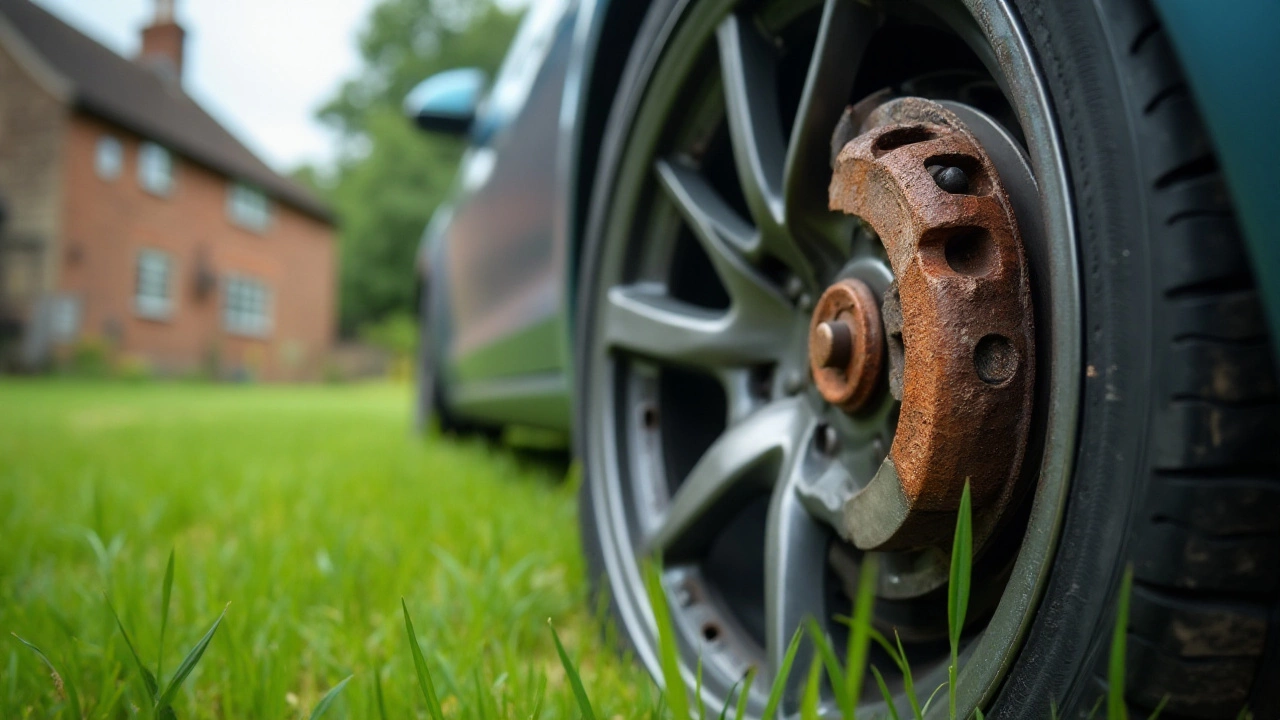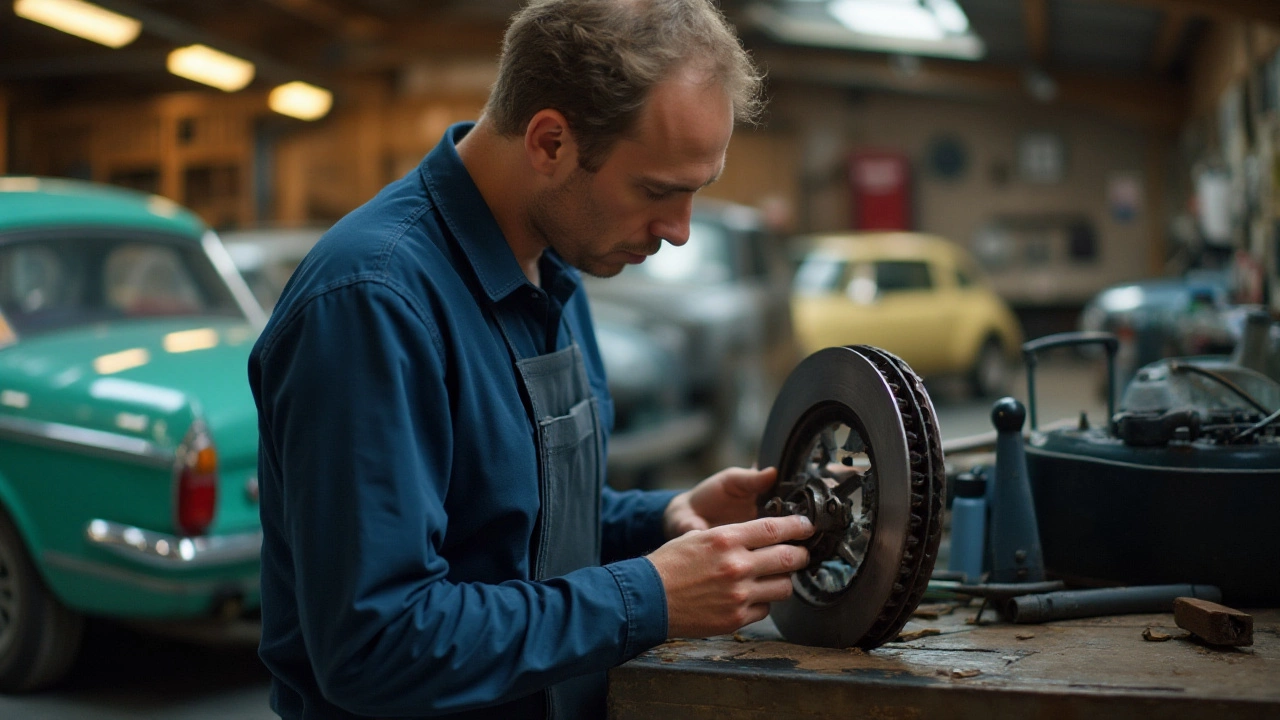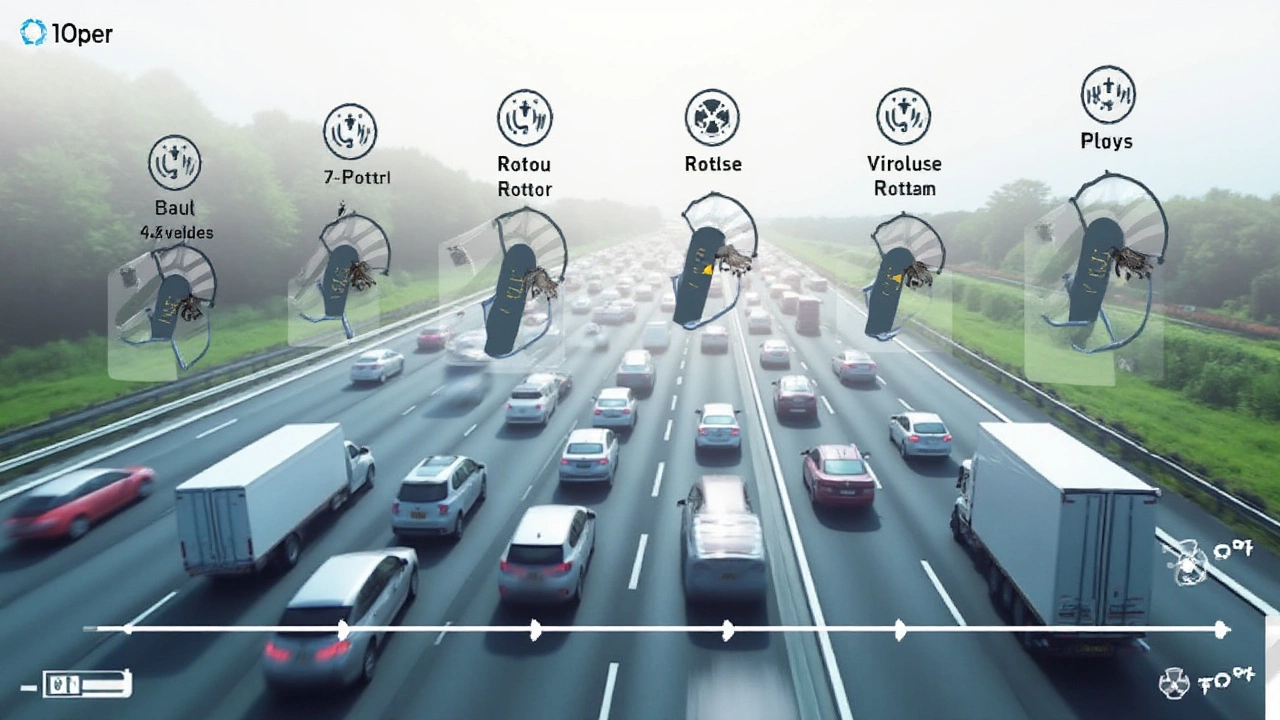Brake rotors, often overlooked, play a silent yet pivotal role in a vehicle's braking system. They're like the unsung heroes, enduring constant heat and friction to bring your car to a stop. But what happens when these crucial components start to falter? Recognizing the signs of bad rotors can be the difference between a smooth stop and a dangerous situation.
From peculiar sounds to uncomfortable vibrations, understanding the early warning signals can prevent further damage and ensure your brakes remain in top condition. Keeping an eye on your brake rotors isn't just about avoiding costly repairs; it's about safeguarding yourself and others on the road. So, let's explore the telltale signs that your rotors might be in trouble, and how to keep them in good shape for the long haul.
- Why Rotors Are Crucial
- Common Symptoms of Bad Rotors
- Risks of Ignoring Rotor Issues
- Maintenance Tips for Healthy Rotors
Why Rotors Are Crucial
The brake system is one of a vehicle's most vital components, and at the heart of this system are the brake rotors. These remarkable discs are responsible for transforming energy into heat, thus enabling a vehicle to stop safely. When you press the brake pedal, the brake pads press against the rotors to slow down the wheels. Without the rotors functioning correctly, the whole braking process can be compromised, potentially leading to hazardous driving conditions. From a safety standpoint, well-maintained rotors are non-negotiable.
One of the most remarkable aspects of rotors is their ability to dissipate heat. Each time the brakes are applied, an incredible amount of heat generates within the system. Rotors are designed to withstand these high temperatures and continue to perform efficiently. A subpar rotor will lose its ability to release this heat, leading to overheating, and consequently, brake fade – a condition where your brakes are less effective, or in severe cases, stop working altogether. This is why regularly checking the condition of your rotors becomes a crucial part of vehicle maintenance.
There is an undeniable connection between rotor quality and car maintenance expenses. Just as with any piece of intricate engineering, the balance between the longevity of a rotor and financial investment is a delicate one. Investing in high-quality, durable rotors can save drivers a significant amount of money in the long term, preventing frequent repairs or replacements. Unchecked, worn-out rotors can lead to more costly damages or even necessitate the replacement of other components in the braking system.
"The rotors are as critical to your car's stopping power as your heart is to pumping blood," says Auto Repair Icon, Geoff Ramsey, highlighting their irreplaceable role in allowing safe driving conditions.
Without the intervention of properly functioning rotors, drivers would face increased risks in emergency situations. Imagine the sudden need to stop on a busy highway; the reliability of your vehicle's stopping power relies heavily on the state of the rotors. They work hand-in-hand with brake pads, ensuring the shortest and safest stopping distance possible. Overlooking the rotors' condition not only endangers individual drivers but also everyone on the road.

Common Symptoms of Bad Rotors
Driving on bad brake rotors isn't just a mechanical oversight, it's a safety hazard waiting to happen. One of the earliest and most noticeable signs of rotor trouble is the noise that resonates from the braking system. If you're hearing a high-pitched or squealing sound, it's a red flag your rotors might be wearing unevenly. This noise often starts out quietly and gradually escalates as the surface of the rotor becomes more weathered. A more ominous grinding sound suggests significant rotor erosion where metal contacts metal, leading to considerable damage if left unaddressed.
Another common symptom to watch for involves the steering wheel or brake pedal vibrations. When the rotors are worn unevenly or warped, they can cause pulsating feedback during a stop. This is often most noticeable at higher speeds or when making a sudden stop. The telltale vibrating sensation becomes more pronounced, shaking your confidence along with your vehicle. It's a clear indicator that your brake rotors need immediate attention to prevent further complications.
Beyond noise and vibrations, diminished braking performance is a major concern. You might find that your vehicle requires longer stopping distances, a factor that could indicate rotor issues. Brake rotors are essential components in distributing force evenly across the wheels. When they're compromised, stopping power diminishes, which can be quite concerning during emergency stops. Your brake pads may also wear more quickly if they're compensating for rotor deficiencies, leading to a 'soft' brake pedal effect.
As auto expert Laura Adams once stated, "Being in tune with your brake system is crucial – bad rotors won't just work themselves out."
Visible inspection can also provide clues pointing toward rotor problems. If you notice scoring or grooves etched into your rotors upon visual examination, it's worthwhile to have them assessed. These lines are a result of worn-down brake pads scraping against the rotors, and while minor severity scratches may not require immediate attention, deeper grooves should be addressed urgently. For those with smaller wheels, checking the rotors is relatively straightforward, but remember, what's visible might not paint the whole picture.
In some cases, addressing the symptoms of bad rotors can seem overwhelming. However, understanding these warning signs can save your brakes and potentially your life. Consider keeping a keen ear for unusual sounds, a steady hand for unexpected vibrations, and a watchful eye for the visual condition and stopping activity of your vehicle. Doing so ensures that you’re not only taking your car maintenance seriously but safeguarding your fellow road users as well.

Risks of Ignoring Rotor Issues
When it comes to vehicle maintenance, overlooking the health of your brake system could have severe implications. Ignoring signs of bad rotors can lead to multiple risks that affect not just your safety but also your wallet. First and foremost, failing brake rotors can significantly increase your stopping distance. This means that during an emergency, your car may not stop as swiftly as you need it to, putting you and other road users at a higher risk of collisions. Furthermore, deteriorated rotors can cause uneven brake pad wear, which means you'll find yourself needing to replace your pads far more frequently, leading to unnecessary expenses.
One notable issue with malfunctioning rotors is brake fade—a condition where your brakes become less effective as they heat up. This can occur when the surface of the rotor becomes glazed, or when there's a permanent deformation. Brake fade is especially dangerous during long descents or in stop-and-go traffic where heat accumulation is prevalent. Trustworthy studies have shown that brake fade can reduce braking capacity by as much as 30%, a number that should give any driver pause. Additionally, bad brake rotors can manifest as vibrations through the steering wheel or brake pedal. While this might seem like a minor annoyance at first, it often signifies serious underlying issues within the brake system. If ignored, the vibrations can damage other components of your car, leading to escalating repair costs.
The noise aspect shouldn't be ignored either. Screeching, squealing, or grinding noises when you apply the brakes are like a red flag. These sounds often indicate that the metal of the rotor is being abraded by the brake pad. If this metal-on-metal contact continues unabated, it can cause severe damage, reducing the lifespan and effectiveness of your entire brake system massively. An often-quoted source from a renowned automotive safety magazine states, "Brake systems, if neglected, become a silent catalyst for accidents waiting to happen." This really hammers home the point of proactive maintenance.
If we get into the financials, a preventive rotor replacement might cost a fraction compared to repairing the aftermath of rotor failure. Additionally, some insurance companies might not cover accidents caused by known mechanical failures such as bad rotors, making it imperative to keep these components in good order. Prevention, in this context, truly is the key.

Maintenance Tips for Healthy Rotors
Maintaining the health of your brake rotors is essential for the optimal performance of your vehicle's braking system. Ignoring regular maintenance can lead to more significant issues down the line, often resulting in expensive repairs or replacements. One primary tip is to pay attention to the condition of your brake pads. Since pads and rotors work in tandem, worn-out brake pads can cause uneven wear on the rotors. Ensuring that your brake pads are in good condition and replacing them when necessary can prolong the life of your rotors.
Another critical aspect of rotor maintenance is avoiding aggressive driving habits. Sudden and high-speed braking puts excessive stress on brake rotors and increases their wear rate. Try to drive smoothly and anticipate stops well in advance, gradually reducing speed when approaching stoplights or traffic. Additionally, including regular brake system inspections in your vehicle's maintenance schedule shouldn't be overlooked either. A qualified mechanic can identify any potential rotor damage early on and recommend appropriate solutions that might save you from more significant damage later.
Maintaining proper wheel alignment is also an integral part of ensuring rotor health. Misaligned wheels can cause uneven pressure on the rotors, leading to warping or other defects. Regularly checking and adjusting wheel alignment helps distribute weight evenly across the rotor surface. It can significantly reduce the risk of warping. While you're paying attention to alignment, keep tire inflation levels in mind as well. Properly inflated tires help maintain consistent rotor contact, preventing irregular wear and tear.
According to a report by the National Highway Traffic Safety Administration (NHTSA), "regular vehicle maintenance, including brake assessments, can reduce the likelihood of brake system failure that leads to road incidents."
Finally, remember that quality matters. Opt for high-quality replacement rotors and brake pads that are suited to your vehicle type and driving conditions. Investing in reputable brands often provides better performance and durability. Consult your vehicle's manual or a trusted automotive specialist to choose components that best match your needs. And as you focus on replacement parts, don't forget the importance of regular rotor resurfacing. This process can smooth out minor imperfections and extend the life of your current rotors, ensuring a safe and enjoyable driving experience. Maintaining your brake rotors doesn't have to be a daunting task when approached methodically; it's a smart investment in the safety and reliability of your ride.
| Maintenance Task | Frequency |
|---|---|
| Brake System Inspection | Every 12,000 miles or annually |
| Tire Pressure Check | Monthly |
| Wheel Alignment | Every 15,000 miles or if steering issues arise |

